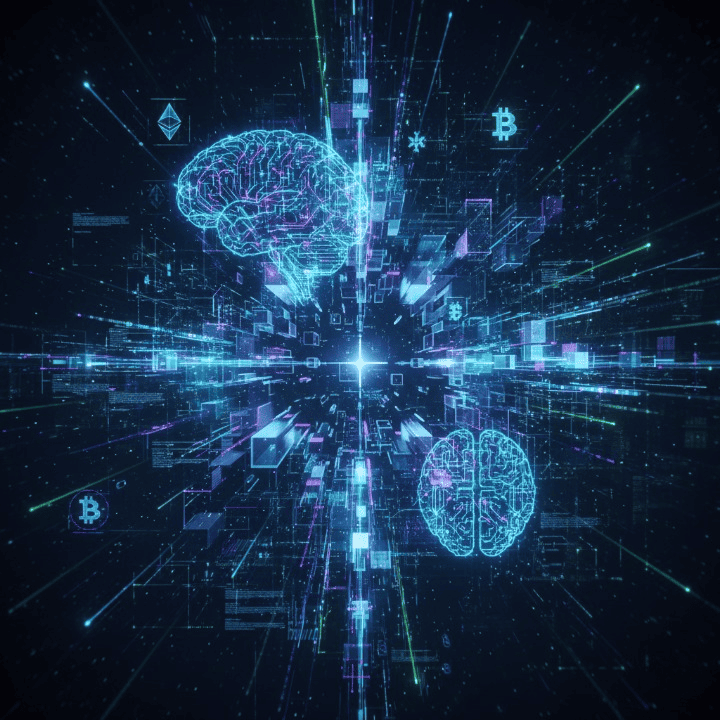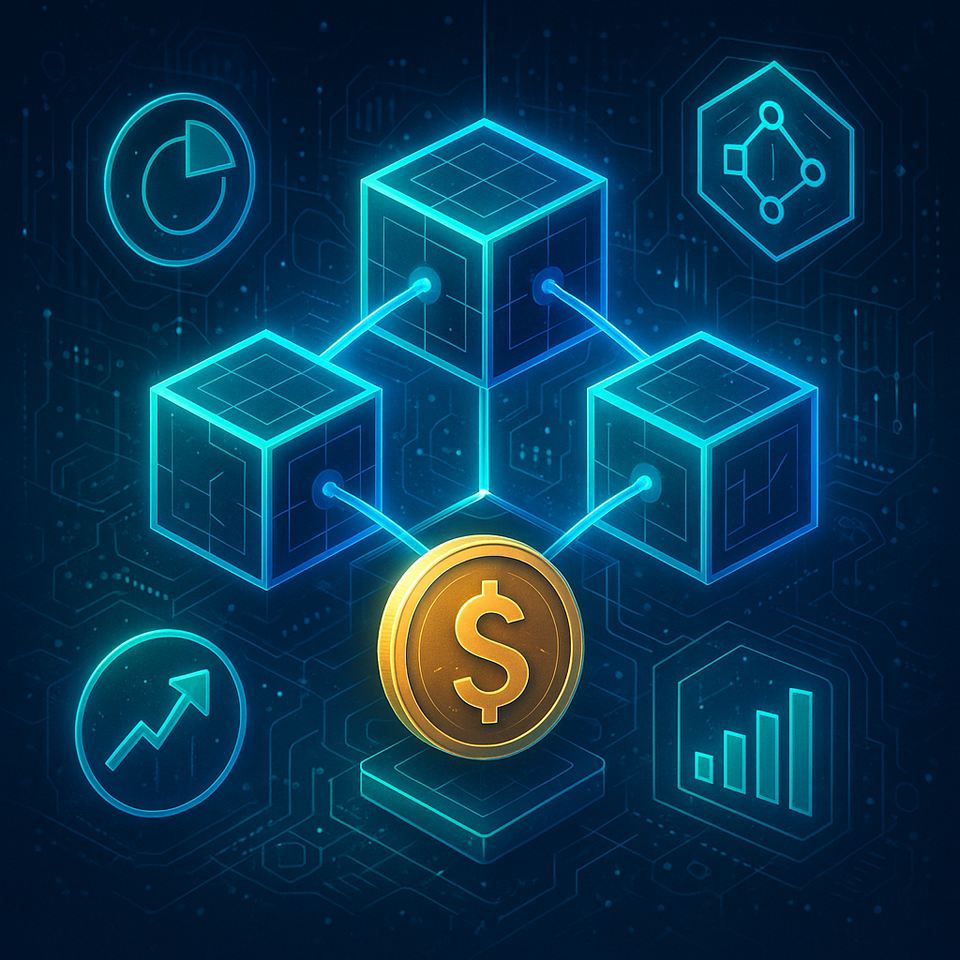
Introduction
Navigating the complex and rapidly evolving world of finance presents unique challenges for investors today. Understanding emerging technologies is crucial for informed decision-making. Cryptocurrency and Artificial Intelligence (AI) stand out as two of the most transformative forces. Both are independently reshaping industries worldwide.
The convergence of these powerful technologies signals a new era. This intersection promises profound changes across financial markets. From enhanced trading strategies to improved security protocols, AI is influencing the digital asset landscape. This article explores the current and future impacts of AI in Crypto. We aim to provide an educational perspective for all readers.
We will delve into how these two fields are intertwining. We will examine the potential opportunities and inherent challenges. Our focus remains on delivering neutral, insightful information. Understanding these dynamics is key for anyone interested in the future of finance. The journey through this technological synergy is just beginning.
Understanding the Foundations: Crypto and AI Explained
To fully grasp their intersection, it is important to understand cryptocurrency and Artificial Intelligence individually. Both represent significant technological advancements. They operate on distinct but complementary principles. Their combined power creates unique possibilities.
What is Cryptocurrency?
Cryptocurrency is a digital or virtual currency. It is secured by cryptography, making it nearly impossible to counterfeit. It is also protected against double-spending. Many cryptocurrencies are decentralized networks. These are based on blockchain technology.
A blockchain is a distributed public ledger. It records all transactions across many computers. This decentralization removes the need for central authorities. Banks or governments are not required. Key characteristics include **security**, **transparency**, and **immutability**. Popular examples are Bitcoin and Ethereum. These **digital assets** have opened new avenues for investment and transactions.
What is Artificial Intelligence?
Artificial Intelligence (AI) refers to the simulation of human intelligence by machines. These machines are programmed to think like humans. They mimic human actions. AI involves various techniques. These include **machine learning** and **deep learning**. It allows systems to learn from data.
AI enables computers to perform tasks typically requiring human intelligence. Examples include problem-solving, understanding language, and recognizing patterns. AI applications are widespread today. They range from recommendation systems to autonomous vehicles. AI excels at processing vast datasets. It can identify complex relationships and make informed predictions.
AI’s Role in Cryptocurrency Trading and Analytics
The application of AI in crypto trading is revolutionizing how investors approach digital assets. AI systems can process and analyze market data at unprecedented speeds. This offers a significant edge. It transforms traditional investment strategies.
Algorithmic Trading Strategies
AI algorithms can analyze massive amounts of financial data. This includes historical price movements and trading volumes. They also consider global news and social media sentiment. This comprehensive analysis helps in identifying potential price trends. It also uncovers arbitrage opportunities.
These algorithms can then execute trades automatically. They follow predefined rules and strategies. This reduces human emotional bias. It also increases trading efficiency. The speed and precision offered by AI are unmatched. This allows for rapid responses to market fluctuations. It is a critical component of modern **portfolio diversification** efforts.
Key benefits of AI-driven trading include:
- **Speed and Efficiency:** Trades are executed instantly based on complex calculations.
- **Reduced Human Error:** Emotions are removed from the decision-making process.
- **Advanced Pattern Recognition:** AI identifies subtle market patterns human traders might miss.
- **Continuous Learning:** Algorithms adapt and improve over time with new data.
Market Prediction and Risk Management
AI models are incredibly adept at predicting market movements. They use sophisticated statistical techniques. These models can forecast future price directions. They analyze a multitude of variables simultaneously. This capability is vital in the volatile crypto market.
Furthermore, AI significantly enhances **risk management**. It quantifies potential investment risks. It helps in optimizing **asset allocation** strategies. AI systems can continuously monitor portfolios. They adjust positions to maintain desired risk levels. This proactive approach helps protect investments.
AI tools contribute to better **financial planning** by offering:
- **Price Prediction:** Utilizing historical data and real-time news to forecast asset values.
- **Arbitrage Opportunities:** Identifying price differences across various exchanges instantly.
- **Risk Assessment:** Gauging market volatility and potential losses more accurately.
- **Portfolio Balancing:** Recommending optimal asset allocations based on risk tolerance.
- **Sentiment Analysis:** Interpreting public mood from social media for market insights.
Enhancing Security and Fraud Detection with AI
Security is paramount in the cryptocurrency space. AI is proving to be an indispensable tool. It significantly bolsters security measures. It actively detects and prevents fraudulent activities. This strengthens the integrity of blockchain networks.
Identifying Malicious Activities
AI systems can monitor blockchain transactions in real-time. They look for anomalous patterns. These patterns might indicate malicious activities. Such activities include **money laundering** or **terrorist financing**. They also detect unauthorized access attempts. AI algorithms learn from past incidents. They become more effective over time. This proactive stance is essential for safeguarding **digital assets**.
By constantly analyzing transaction data, AI can spot unusual behaviors. For example, large, sudden transfers to unknown addresses. Or, a series of rapid, small transactions. These might flag potential security breaches. This helps in protecting users and the ecosystem.
AI’s capabilities in security include:
- **Anomaly Detection:** Spotting irregular transaction volumes or unusual wallet activities.
- **Fraud Pattern Recognition:** Identifying known scam methods and emerging threats.
- **Real-time Monitoring:** Continuously scanning the network for suspicious actions.
- **Threat Intelligence:** Learning from past security breaches to improve future defense.
Smart Contract Auditing
Smart contracts are self-executing contracts. They have the terms of the agreement directly written into code. Vulnerabilities in smart contract code can lead to significant financial losses. AI tools can automatically audit these contracts. They scan for potential flaws or security loopholes. This process enhances the reliability of decentralized applications (dApps).
Automated auditing by AI helps developers identify issues early. It allows for corrections before deployment. This minimizes the risk of costly exploits. It builds greater trust in blockchain-based systems. AI ensures that smart contracts function as intended. This is crucial for their adoption in various industries.
AI supports smart contract security through:
- **Code Analysis:** Examining smart contract code for logical errors and vulnerabilities.
- **Vulnerability Detection:** Identifying potential attack vectors like reentrancy or overflow bugs.
- **Compliance Checks:** Ensuring contracts adhere to security best practices and standards.
- **Automated Testing:** Running simulations to test contract behavior under various scenarios.
The Rise of Decentralized AI
The fusion of blockchain’s decentralization with AI’s intelligence is creating a new paradigm: Decentralized AI. This innovative approach addresses some of the inherent limitations of centralized AI systems. It fosters greater transparency and fairness.
Combining Blockchain and AI
Decentralized AI aims to distribute AI models and their data across blockchain networks. This means no single entity controls the AI. This structure ensures **immutability** and **transparency** of AI processes. It makes AI more robust and censorship-resistant. Data ownership can also be returned to individuals.
Blockchain can securely record every step of an AI model’s training. It can log its decision-making process. This creates an auditable trail. This approach combats issues like algorithmic bias and lack of accountability. It opens up new possibilities for collaborative AI development.
Benefits of decentralized AI include:
- **Data Ownership:** Users control their data used by AI models, earning compensation.
- **Bias Mitigation:** Open-source AI models allow for community scrutiny and improvement.
- **Transparent Decision-Making:** AI processes are visible and verifiable on the blockchain.
- **Censorship Resistance:** No single point of control means greater resilience.
New AI-Powered DApps and Protocols
This intersection is leading to the development of novel decentralized applications (dApps). These dApps leverage AI capabilities on blockchain networks. They create new services and marketplaces. For example, decentralized marketplaces for AI algorithms and datasets are emerging. These platforms allow developers to monetize their AI creations.
Furthermore, **Decentralized Autonomous Organizations (DAOs)** are exploring AI governance. AI could assist in decision-making within these organizations. Projects like SingularityNET and Fetch.ai are pioneering this space. They aim to build a global, decentralized AI network. This vision promises a more equitable and accessible AI future.
Innovative applications in this area include:
- **Decentralized AI Marketplaces:** Platforms for buying and selling AI services and data.
- **AI-Enhanced DAOs:** AI assisting in governance and decision-making for decentralized entities.
- **Personalized AI Agents:** AI assistants operating on behalf of users with enhanced privacy.
- **Federated Learning:** AI models trained on decentralized data without sharing raw information.
Future Outlook and Challenges
The synergy between cryptocurrency and Artificial Intelligence holds immense promise. It also presents significant challenges. Understanding these aspects is crucial for future development. It is also important for informed investment decisions.
Emerging Opportunities
The combination of these technologies could lead to revolutionary advancements. We may see AI-driven financial inclusion. This could provide banking services to underserved populations. Personalized financial advice through AI could become commonplace. These advisors would offer tailored strategies based on individual risk profiles.
New investment vehicles might emerge. These could be AI-managed crypto funds. Such funds would dynamically adjust portfolios. They would react to market conditions. The development of more sophisticated **digital assets** is also likely. These assets could have embedded AI features. The future holds vast potential for innovation in finance and technology.
Key opportunities include:
- **AI-Driven Financial Inclusion:** Expanding access to financial services globally.
- **Personalized Financial Advice:** AI tailoring investment strategies to individual needs.
- **AI-Managed Investment Funds:** Automated, intelligent portfolio management for crypto.
- **Enhanced Digital Asset Utility:** Crypto assets with built-in AI functionalities.
- **Cross-Chain AI Solutions:** AI facilitating interoperability between different blockchain networks.
Key Challenges
Despite the promise, several hurdles must be overcome. Regulatory frameworks are still catching up. Governments worldwide grapple with how to classify and govern cryptocurrencies and AI. This **regulatory uncertainty** can hinder innovation and adoption. Ensuring **data privacy** while leveraging AI’s analytical power is another major concern.
**Scalability issues** within blockchain networks remain. These can limit the computational demands of advanced AI. The **ethical development of AI** is also paramount. Preventing bias and misuse in decentralized systems is a complex task. Addressing these challenges requires collaborative effort from technologists, policymakers, and the community.
Significant challenges include:
- **Regulatory Uncertainty:** Lack of clear legal frameworks for crypto and AI integration.
- **Data Privacy Concerns:** Balancing AI’s data needs with user privacy and security.
- **Scalability Limitations:** Blockchain network capacities for handling complex AI computations.
- **Ethical AI Development:** Preventing bias, ensuring fairness, and avoiding misuse in decentralized AI.
- **Interoperability:** Achieving seamless communication between different blockchain and AI systems.
- **Energy Consumption:** Developing sustainable solutions for energy-intensive AI and blockchain processes.
Conclusion
The convergence of cryptocurrency and Artificial Intelligence marks a pivotal moment in technological evolution. We have explored how AI is transforming various facets of the crypto world. These include more intelligent trading systems and robust security protocols. We also examined the exciting emergence of decentralized AI. This promises a future of transparent and equitable AI applications.
This powerful synergy will continue to reshape the financial landscape. It will create new investment opportunities. It will also demand careful consideration of regulatory and ethical challenges. The path forward involves continuous learning and adaptation. Investors and enthusiasts alike must stay informed. Understanding these dynamics is crucial for navigating the next wave of innovation.
The future is likely to see even deeper integration. This will unlock unprecedented capabilities. It will also raise complex questions. The journey at the intersection of these two fields is dynamic. It calls for thoughtful engagement. Remaining educated on these advancements is key for successful **financial planning** in this evolving digital age.


